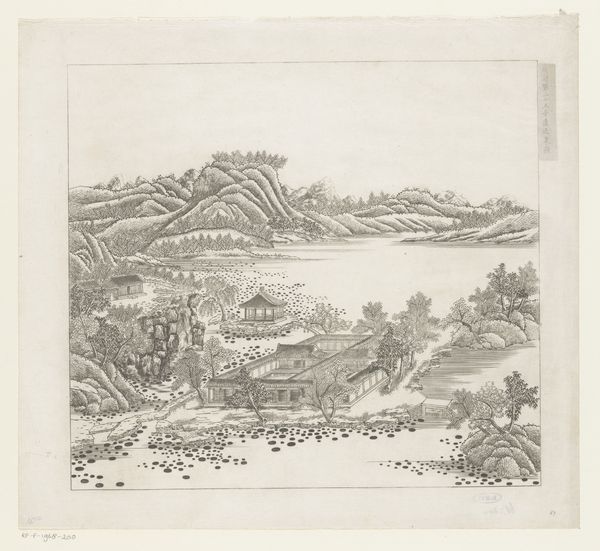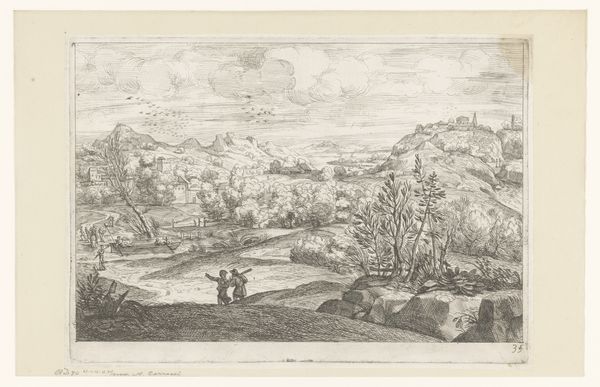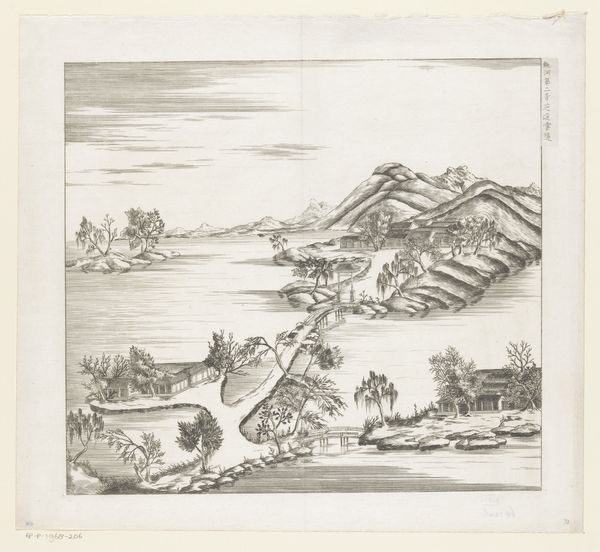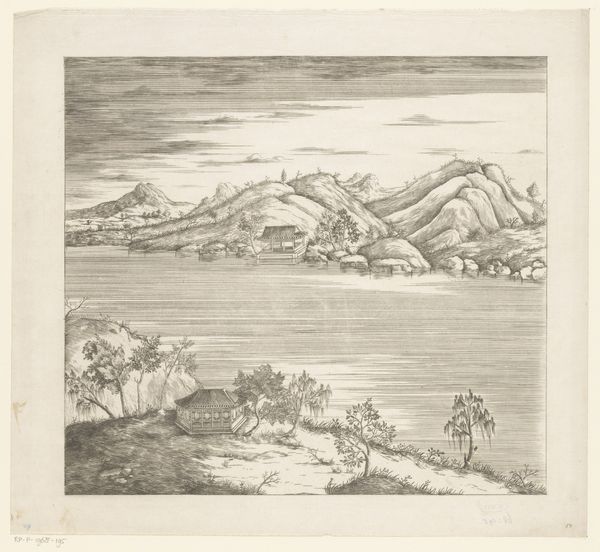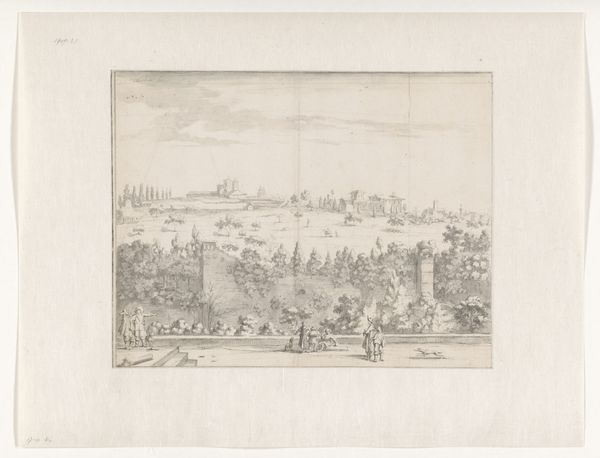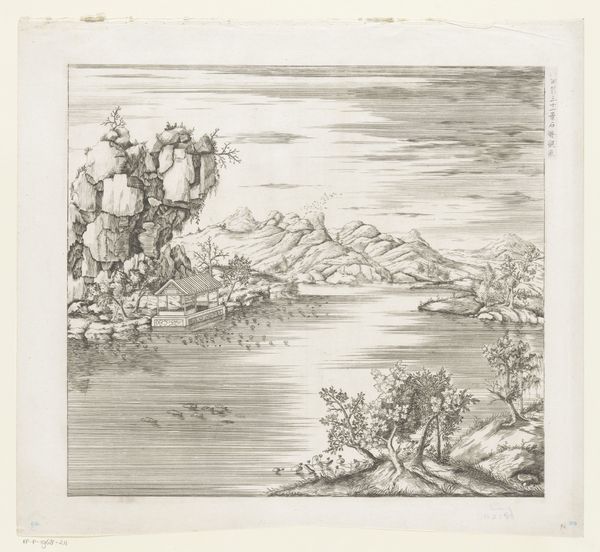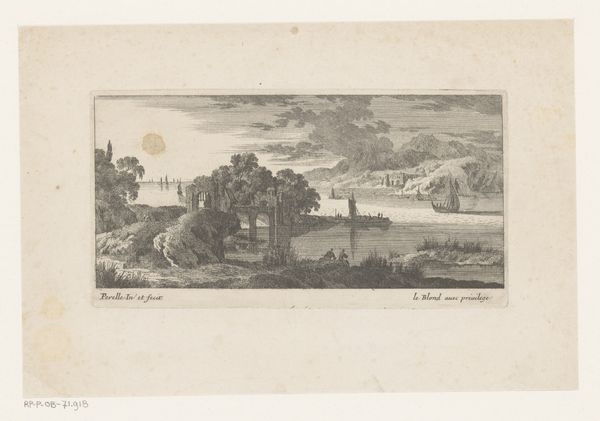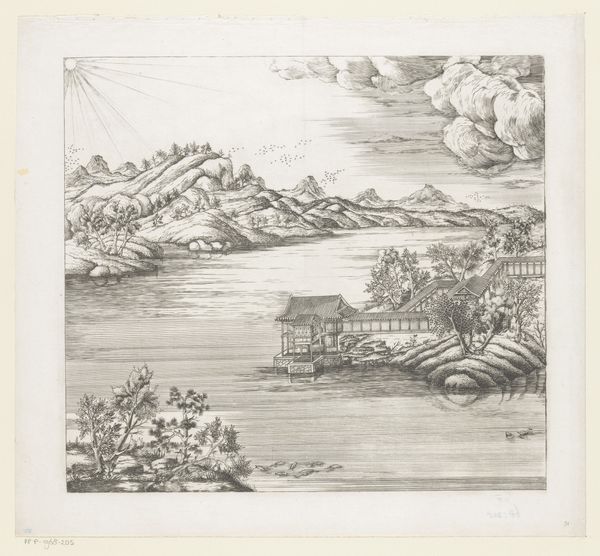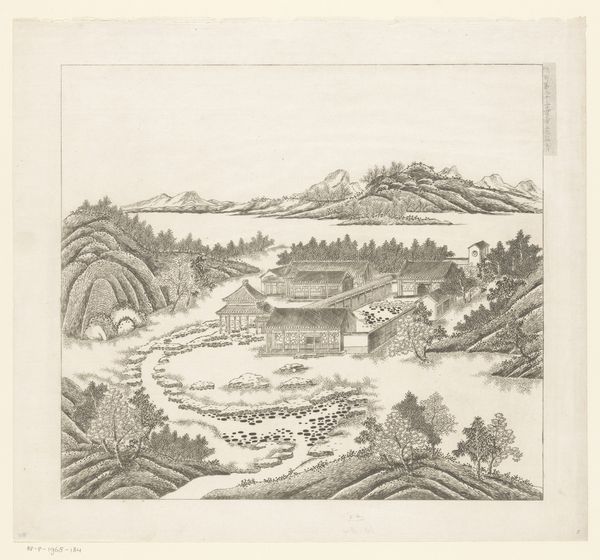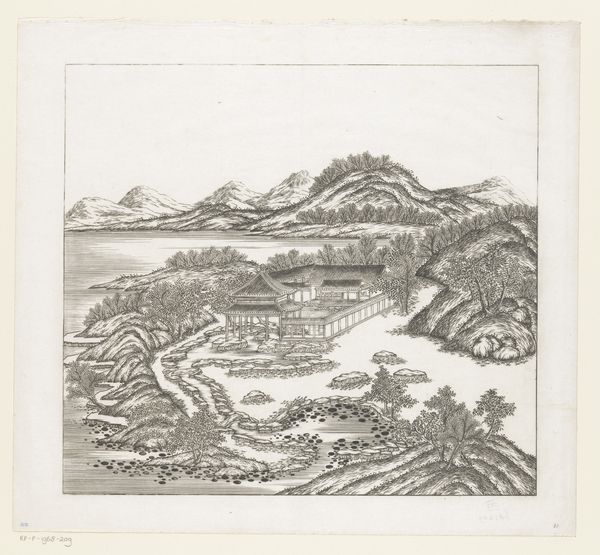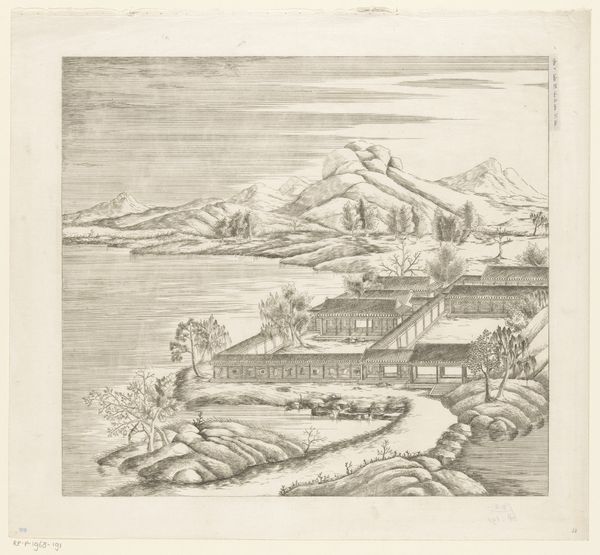
Gezichten op Ambon en de eilanden Banda en vulkaaneiland Banda Api 1623 - 1655
0:00
0:00
print, engraving
#
dutch-golden-age
# print
#
old engraving style
#
landscape
#
cityscape
#
history-painting
#
engraving
Dimensions: height 151 mm, width 190 mm
Copyright: Rijks Museum: Open Domain
This print, made by Matthäus Merian around the 17th century, depicts views of Ambon, Banda, and Banda Api islands. The work reflects the Dutch presence in what is now Indonesia, a presence built on spice trade monopolies and colonial exploitation. The image is divided into two registers: the upper showing Ambon with Dutch ships offshore, and the lower depicting the volcano Banda Api, along with Banda island and its Dutch fort, ‘Nassau Belgica’. This visual juxtaposition subtly emphasizes Dutch power, contrasting nature's volatile forces with the order and control of the colonial project. The figures on the left in local dress point to the dynamic between colonizer and colonized. Consider this print as a piece of institutional history. It was produced and consumed within a specific socio-political context, one of global trade and Dutch expansion. It speaks volumes about the social conditions shaping artistic production. What other prints and textual sources might shed light on the reality behind these carefully constructed images? What was life like in the Dutch fort, for colonizers and colonized alike?
Comments
No comments
Be the first to comment and join the conversation on the ultimate creative platform.
